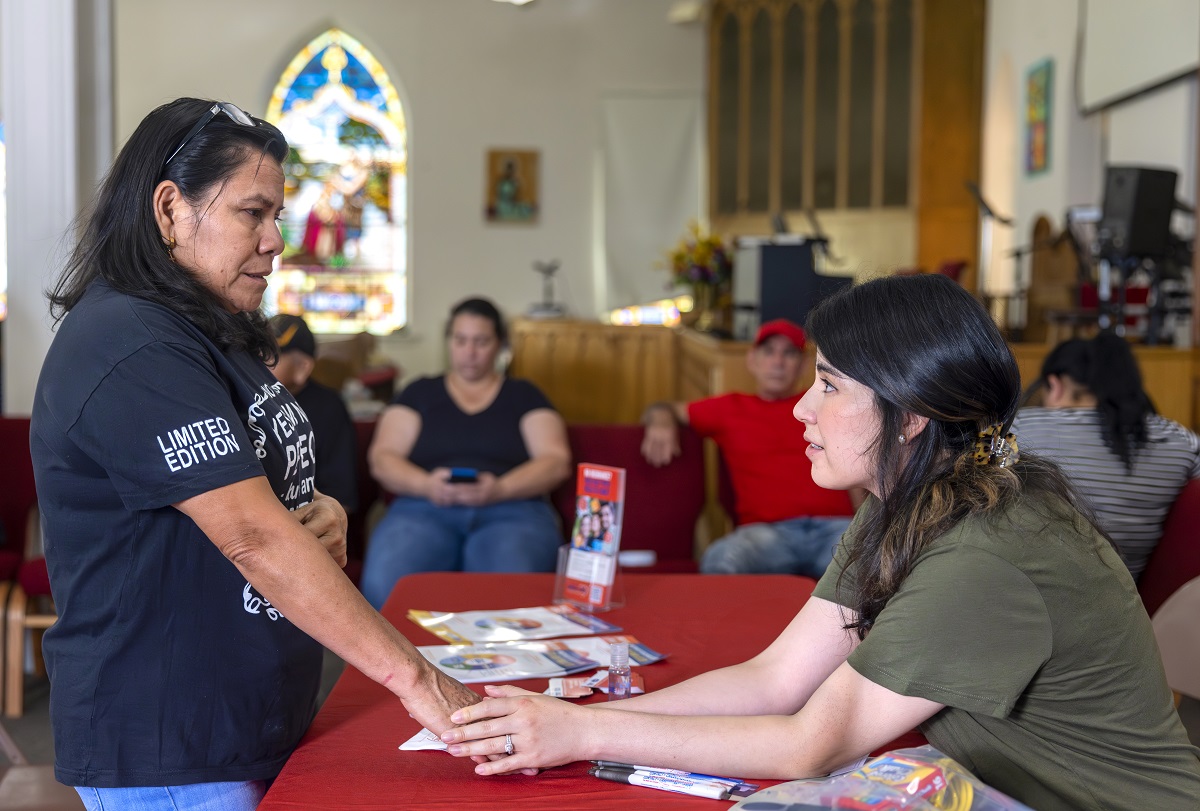Bridging the Gap: The Transformative Role of Community Health Workers in Harrisburg
In the heart of Harrisburg, a poignant encounter unfolded between Cristel Woodcock and Maria Hernandez, two women from vastly different backgrounds yet united by a shared struggle. Their meeting at Brethren Community Ministries (BCM) was not just a chance encounter; it was a lifeline for Maria and her daughter, Jaileah, who had recently relocated from El Salvador. This story highlights the critical role community health workers play in connecting vulnerable populations with essential resources and support.
A New Beginning in Harrisburg
Maria Hernandez and her daughter Jaileah arrived in Harrisburg six months prior, seeking a better life after leaving their home in El Salvador. However, the transition proved to be fraught with challenges. Jaileah, who has cerebral palsy, requires constant care, making it nearly impossible for Maria to secure stable employment. During the school year, they relied on a Pennsylvania-run school lunch program, which provided them with enough food to survive. But as summer approached, the family faced a daunting reality: the absence of reliable food sources.
Maria’s attempts to access local food banks were met with hostility, leaving her feeling unwelcome and defeated. In search of help, she decided to visit BCM, where she hoped to find a more supportive environment.
A Transformative Encounter
As Maria entered BCM, she was greeted by a bustling crowd of neighbors, many of whom spoke only Spanish. It was here that she met Cristel Woodcock, a Contact to Care Community Health Worker for Penn State Health. Woodcock’s empathetic smile and genuine concern immediately put Maria at ease. Their conversation marked a turning point for Maria and Jaileah.
Woodcock’s role as a community health worker is pivotal in the partnership between Penn State Health and the United Way of the Capital Region. She serves as a bridge, connecting individuals like Maria with vital resources, including medical, dental, and vision care. For many residents in the area, Woodcock is a beacon of hope, guiding them through the complexities of healthcare access.
Addressing Systemic Barriers
The challenges faced by Maria and Jaileah are not isolated incidents. A 2021 survey conducted by Penn State Health revealed alarming statistics about the healthcare landscape in the region. Nearly half of respondents reported an inability to afford health insurance, while many others faced limited access to healthy food options. Language barriers, socioeconomic disparities, and geographic obstacles further complicate the situation for many residents.
Community health workers like Woodcock play a crucial role in addressing these systemic barriers. They not only connect individuals with healthcare services but also advocate for their needs, ensuring that they receive the support necessary to thrive. Woodcock’s work exemplifies the importance of having culturally competent professionals who understand the unique challenges faced by marginalized communities.
Building Community Connections
In addition to her work at BCM, Woodcock is involved in various outreach programs aimed at promoting health and wellness in the community. One such initiative is "Walk with a Doc," where local physicians engage with residents in a casual setting, discussing health topics while walking together. This program fosters a sense of community and encourages participants to prioritize their health.
Another notable program is Veggie Rx, which incentivizes individuals with diabetes to learn about healthy eating and fitness. Participants receive vouchers to purchase fresh fruits and vegetables, addressing the issue of food deserts in the area. Community health workers like Madeline Bermudez, who is fluent in Spanish and deeply connected to the Hispanic community, play a vital role in these initiatives, ensuring that language barriers do not hinder access to essential resources.
A Personal Connection
The bond formed between Woodcock and Hernandez during their initial meeting was profound. As they discussed Jaileah’s healthcare needs, Maria’s eyes filled with tears of relief. In that moment, they were not just two women from different backgrounds; they were allies in a shared struggle. Woodcock’s personal experience as an immigrant from Guatemala allowed her to empathize with Maria’s situation, creating a connection that transcended language and cultural differences.
Their relationship exemplifies the transformative power of community health workers. By providing personalized support and guidance, they empower individuals to navigate the complexities of the healthcare system and advocate for their own needs.
Conclusion: A Vision for Health Equity
The work of community health workers like Cristel Woodcock is integral to the mission of Penn State Health to improve health equity and wellness in underserved communities. By addressing the barriers that prevent individuals from accessing healthcare, these dedicated professionals are making a tangible difference in the lives of families like Maria and Jaileah’s.
As Maria left BCM that day, she felt a renewed sense of hope. With Woodcock’s support, she was not only able to secure food for her family but also take the first steps toward obtaining the healthcare Jaileah desperately needed. Their story is a testament to the power of community connections and the vital role that compassion and understanding play in bridging the gaps in healthcare access.
In a world where many fall through the cracks, community health workers stand as advocates, champions, and lifelines for those in need, ensuring that everyone has the opportunity to lead a healthy and fulfilling life.


